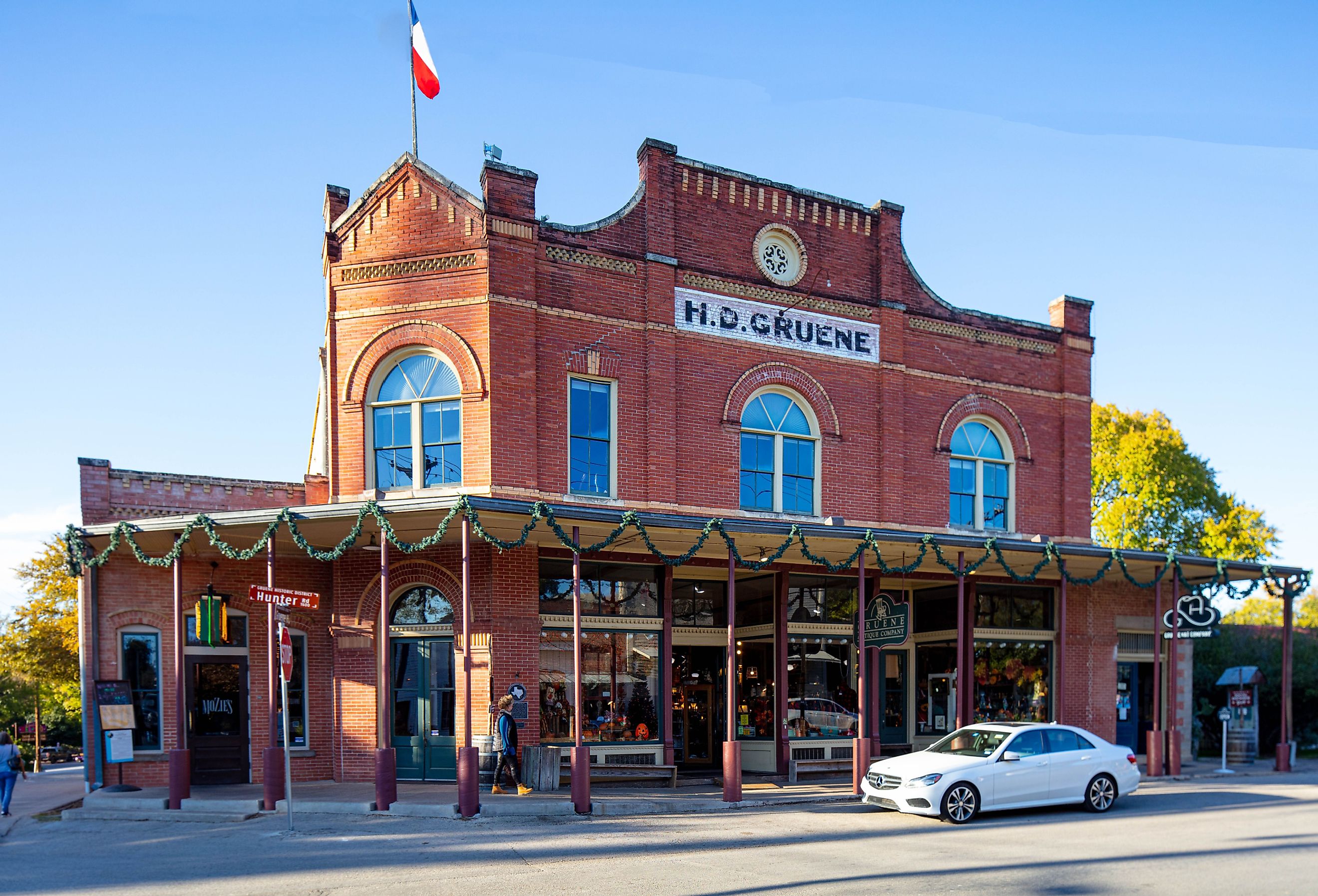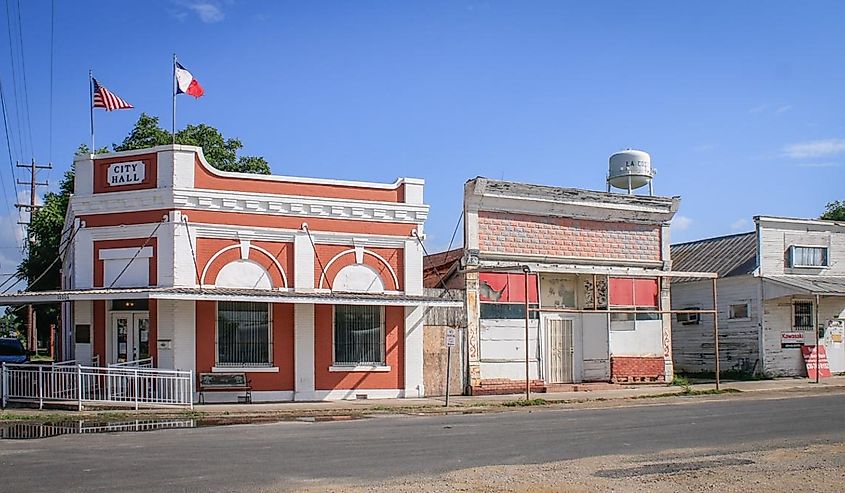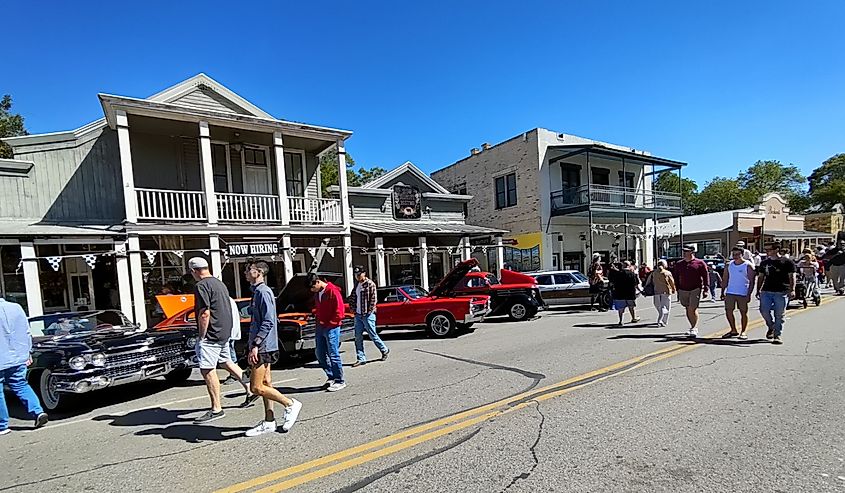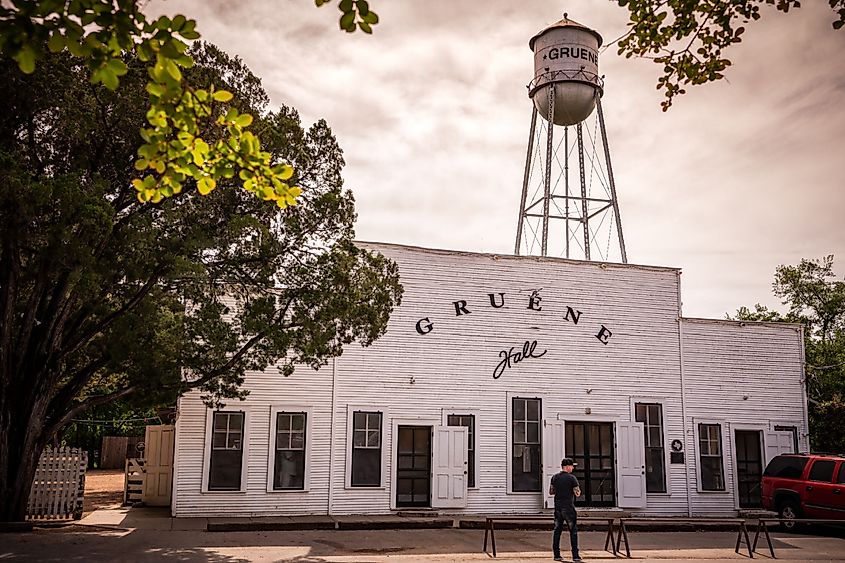
These Towns in Texas Have a Rich Cultural Heritage
Few states have as much rich history and culture as the Lone Star State, joining the US as the 28th state in 1845. Even fewer have quaint towns that blend a rustic charm and the Southern dream of quietness. It is here in Texas that both of these lovely atmospheres combine and dance in their most enchanting and abundant forms. Ignore the noisy life of the city for now and step back into a more peaceful time in places like Lockhart and Marfa. Texas is filled with not only the small-town experience but also a deep history that is its roots. Unearth seven of the most beautiful small towns in Texas with a rich cultural heritage.
Lockhart

Named after the first settler in the area, Lockhart's humble beginnings started off with slow and sometimes stagnant development. Eventually finding a foothold with cotton after the Civil War, the small town began to experience a boom well into the early 20th century, when the discovery of oil modernized the locale. What once was a small settlement of ranchers and farmers became a burgeoning area of prospect and discovery. Alongside this explosion of technology and infrastructure, the First Christian Church, which nearly stood alone in 1898, had finally helped form a small but impactful town square. And although the many brick-red buildings of Lockhart still exist and draw the attention of many visitors, the significance of cotton and oil has taken second fiddle to a more recent development in the 20th century.
In 1999, the Texas Legislature named Lockhart the "Barbecue Capital of Texas." Residents and visitors alike have the option between four legendary BBQ locations, with many more to choose from as well, including, but not limited to, Black's BBQ, Kreuz Market, Smitty's Market, and Riley's Pit BBQ.
Marfa

Being well known in the paranormal community for the mysterious Marfa lights, supernatural occurrences are not the only reason why Marfa stands in a unique place compared with its peers. Starting out as a simple water stop for the trains passing by, Marfa has unusually turned into an epicenter for the arts and historical architecture. Many come to see the grand and pale adobe architecture, but perhaps the greatest draw belongs to the impressive number of designated historical sites in town alone.
With 183 historic locations, a trip to Marfa will never stale or feel like it drags. One might do well visiting the famous Presidio Museum, and then afterward touring the notoriously haunted Hotel Paisano. Even the streets are easy on the eyes. Working in the past with internationally renowned artist Donald Judd, Marfa has changed the playing field by imbuing their local buildings and streets with all sorts of colorful art. The Chinati Foundation is a contemporary art center in town, founded by Donald Judd.
LaCoste

Taking its name from a prominent and wealthy businessman named Jean B. Lacoste, LaCoste won its place as a cultural hub of Texas by sheer persistence and preservation. Unlike the many towns that have now been touched and altered by the tendrils of technology, this spectacular time capsule still remains somewhat rural despite the nearby growing cities and blight of urban sprawl. But do not be taken back by its status, it has persevered throughout the worst floods in the early 20th century.
Today, it remains one of the last bastions of what a smaller town is meant to be: a lively place living off of its local specialties, such as honey, oats, cotton, and vegetables. Sprinkled throughout the town are small pockets of Gothic architecture on buildings that look like they've been imported straight from Europe. Life here is quiet, rewarding, and especially scenic, with large hills looming in the distance. It is especially noteworthy for its beautiful Our Lady of Grace Chruch, established in 1911.
Boerne

If German culture had a child with a 1950s American parlor, their spawn would be the town of Boerne, Texas. While the most striking feature of Boerne is its claim to foreign origins, its placehood here has left more in its wake than anything that could have been brought from the old country.
Becoming something new in the process, this German-Texan creation is home to many traditional bakeries and restaurants that seek to combine the old-world style of cuisine with the means and fruits available in Texas. Not to mention that Boerne is home to one of the oldest and most luxurious hotels in the country, The Kendall Inn. Truly serving a different kind of audience, it has hosted the likes of Dwight D. Eisenhower and former Civil War figure Jefferson Davis. Operating since 1859, the tale of The Kendall Inn is nearly synonymous with the history of Boerne as a whole.
Gruene

Pronounced like the color 'green,' Gruene has had its fair share of German cultural influence. Farmers from the old country first started arriving in the 1840s, and the more that arrived, the larger Gruene grew as well. Becoming yet another cotton town, Gruene stands out due to a great battle that took place there in the 1970s. Not one fought on the battlefield, but one fought on the historical front, as a young student from UT Austin once had to sway property developers not to destroy 200+ acres of land and historic buildings spanning as far back as the 1800s. In a major win for preservation, the then student had managed to place vast swaths of Gruene on the National Register of Historic Places in 1975.
Due to his efforts, Gruene today stands as a classical reminder of how life was back then. Fittingly nestled between San Antonio and Austin, it keeps change in its place.
Granbury

Perhaps having even too many stories and legends, Granbury is a scenic town home to many myths, sites of interest, and the clear blue Brazos River flowing by its side. Supposedly the resting place of the notorious outlaw Jesse James, Granbury also contains two museums that dictate the town's and county's history. Finally, there is a peculiar myth surrounding a charming gift shop by the name of St. Helen's on the Historic Granbury Square. Apparently, some believe John Wilkes Booth escaped his doom in Virginia after assassinating then-President Lincoln. He then moved to Granbury and changed his name to John St. Helen to live out the rest of his life as a bartender at St. Helen's on the Historic Granbury Square.
While the many stories and tales of Granbury are as colorful as the town, it is clear that they make the area's lifeblood.
Port Lavaca

Built on the ruins from bloodshed, Port Lavaca sits by the bay and owes its complete existence to violence. In 1840, a sweeping raid led by the Comanche warriors happened to raze the settlement of Linnville. Soon after the chaos, Port Lavaca was founded a year later by the survivors and destitute of Linnville's destruction.
Perhaps proving that out of destruction comes creation, Port Lavaca today has faced many hardships not unlike that of Lacoste. Including many hurricanes, the bay town has somehow exceeded expectations and thrived despite its many trying times. One of the more popular buildings of intrigue is the famous Beach Hotel. Constructed in 1904, it has stood tall and become an essential element of Port Lavaca's identity.
While Texas as a state is more culturally rich than most, these precious towns are but a handful of gold from heaps of treasure. Each one embodies something different, something valuable from a time now lost. It is through this sliver of lost time that these small towns begin to form the picture of Texas heritage. A heritage that manages to still live today.











